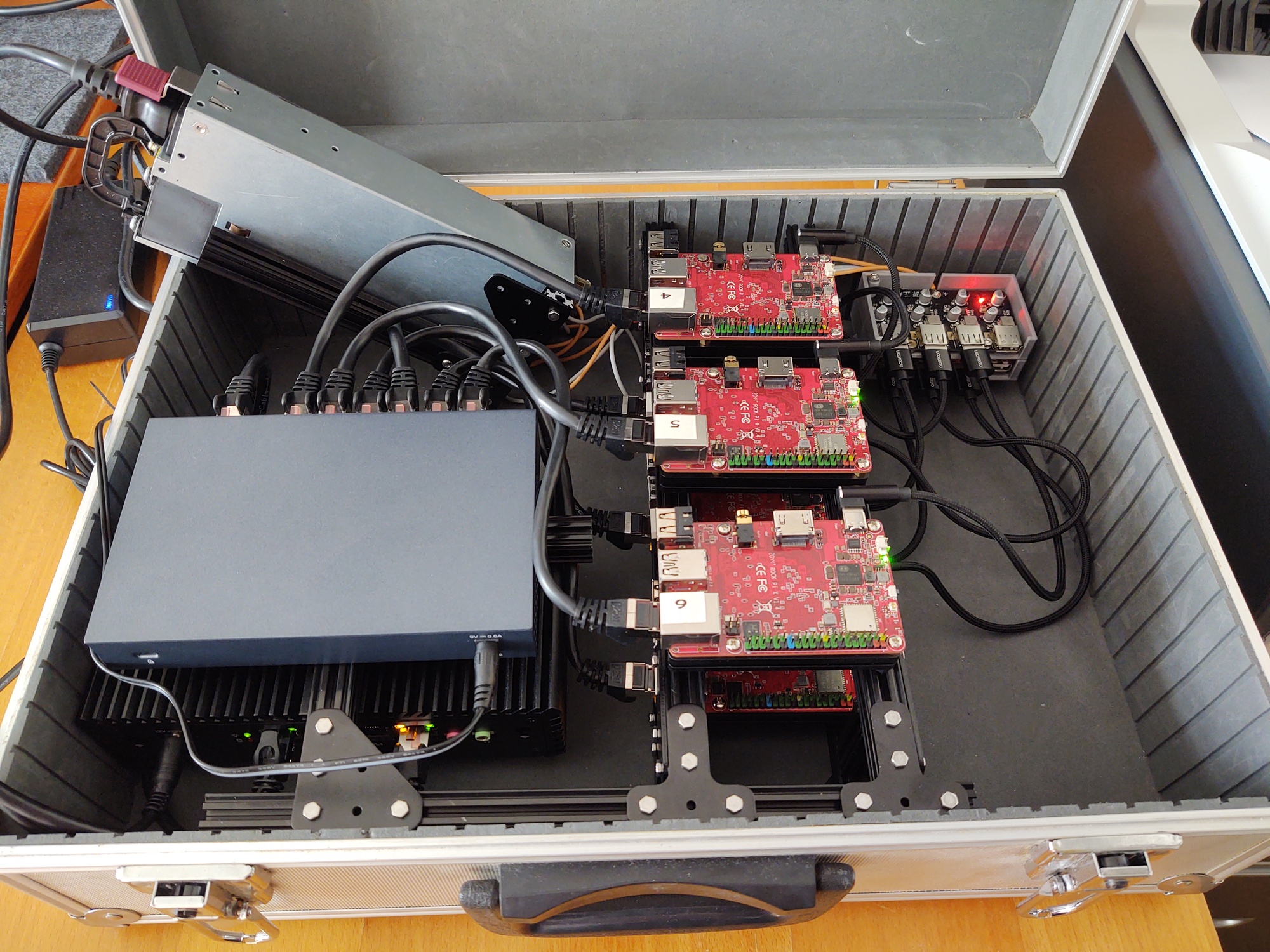After the proof-of-concept, it is time for the real version. Parts are bound together user OpenBeam structure. The result fits in a low-cost aluminum covered case.

OS is deployed on each node with minimum configuration:
- Host naming (cargo[1-6])
- Ethernet activated
- Locale and timezone
- Time server (NTP).
The management server provides global services:
- DHCP and DNS
- Gateway for Internet access
Public keys from management server are dispatched on each node to allow centralized management. Ansible will be used but for now basic configuration is performed with a classic tool from High Performance Computing: a parallel shell able to simultaneously launch the same command on each node. It is the opportunity to call an old friend: pdsh.
Here is an example of use with a simple command:
[capitaine@rotterdam1 ~]$ pdsh -w ssh:root@cargo[1-6] "uname -nrpo" |sort
cargo1: cargo1.fleet 4.18.0-240.15.1.el8_3.x86_64 x86_64 GNU/Linux
cargo2: cargo2.fleet 4.18.0-240.15.1.el8_3.x86_64 x86_64 GNU/Linux
cargo3: cargo3.fleet 4.18.0-240.15.1.el8_3.x86_64 x86_64 GNU/Linux
cargo4: cargo4.fleet 4.18.0-240.15.1.el8_3.x86_64 x86_64 GNU/Linux
cargo5: cargo5.fleet 4.18.0-240.15.1.el8_3.x86_64 x86_64 GNU/Linux
cargo6: cargo6.fleet 4.18.0-240.15.1.el8_3.x86_64 x86_64 GNU/LinuxSince Rock PI-X don’t have Real Time Clock (RTC) by default, the parallel shell is used to:
- Install NTP client:
dnf install chrony -y - Enable NTP client (
systemctl enable chronyd) and activate (systemctl restart chronyd) - Force time synchronization:
chronyc -a burst 4/4
